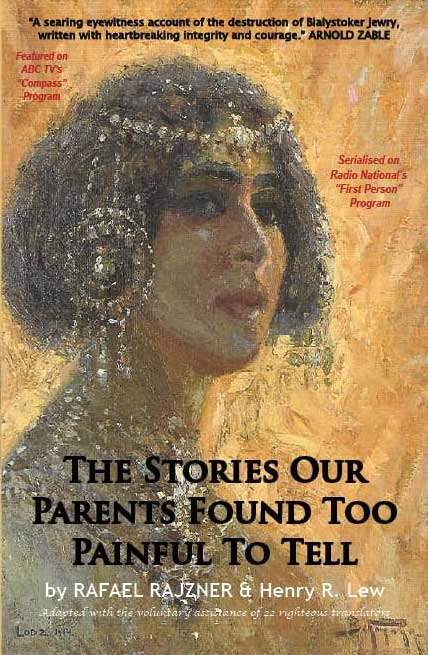THE STORIES OUR PARENTS FOUND TOO PAINFUL TO TELL
BY RAFAEL RAJZNER & HENRY R. LEW
TRANSLATED FROM THE YIDDISH
THE ANNIHILATION OF BIALYSTOKER JEWRY BY RAFAEL RAJZNER
Published in Melbourne, Australia in 1948

This book is in its second printing with a new cover.
This cover is based on a painting "The Jewish Bride" painted in Lodz in 1914 by Abraham Behrman (1876-1942)
who perished in the Bialystok Ghetto and who is mentioned on page 86 of the book.
| Some 60,000 to 70,000 Jews lived in
Bialystok prior to the Holocaust. Only a few hundred survived. Rafael
Razner was one of them. As a eyewitness, Rajzner spent the post-War years
penning his memoirs -- his account of the destruction of Bialystok Jewry.
He started writing in Italy and then emigrated to Melbourne, Australia, where his Yiddish
memoir, The Annihilation of Bialystok Jewry, was published by the
Bialystoker Centre (Australia) in 1948.
It was in 2001 that Harry Lew, a Melbourne Ophthalmologist whose parents were both born in Bialystok, visited his then 95-year-old father and was introduced to this book. Harry, an accomplished author as well as an Eye Surgeon, decided to make this important memoir available in English to a much larger audience. We are very thankful that he did. A March 2008 article in The Australian, written by Fiona Harari is an excellent introduction to Rajzner's life, his book, and the process that enabled Harry Lew to translate and publish this important first-hand history. This book, in a coincidental way, is weaved into our modern culture. An Austrian film, The Counterfeiters, was awarded the 2008 Academy Award for Best Foreign Language Film. The Counterfeiters is a little known story of Jews who were forced to counterfeit British Pounds Sterling at the Sachsenhausen Concentration Camp. Rafael Rajzner, a printer by trade, was one of those Jewish counterfeiters. However, his story, as related in this book, differs significantly from the movie. Read about this by clicking here. The book has an index of surnames. With the kind permission of the Author, this list is reproduced here. A review of this book by freelance reviewer, Diane Carlyle, is copied below with permission. On October 12, 2008, the Australian Broadcasting Corporation's Compass program (ABC's popular year-round series from across the globe devoted to faith, values, ethics, and religion) aired The Sleeping Book, the story of Rafael Rajzner, Harry Lew, and the publication of this book. For those resident in Australia, download this episode here. Due to copyright reasons this video program is available for download only by people located in Australia. Interested in knowing more about the book, please contact author Harry Lew at harlew@blaze.net.au.
|


